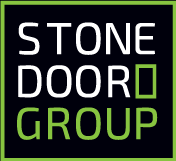In the IT world, we all know that there is a lot of friction in the software supply chain. There is a lot of work involved in creating applications that can move across environments. It takes time and personnel to tweak and adjust all the dependencies, configurations, and libraries that go into a typical application.
According to an article in Information Week, implementing software, especially enterprise software, can be a difficult and tedious process. More so if an implementation is not well planned. In this case, implemented software designed to increase productivity can actually introduce friction, which drags on productivity.
IT software isn’t the only cause that produces friction that drags on productivity. According to Career Trend, interpersonal conflicts in the workplace contribute to an enormous amount of friction that drags on productivity. Everyone reading this has experienced some kind of politics and finger pointing over the course of their careers. In fact, a recent survey on office politics finds that 47% of employees find that office politics is one of the top 10 stressors at work.
On a recent business trip, I overheard a conversation while sitting in an airport: a manager was telling one of his new employees that part of his job was to “create weekly or monthly blame time in meetings to hammer on people who had made errors or mistakes that caused problems.” I am not making this up.
Office Politics
What kind of workplace environment does this create? Everyone is constantly pointing at someone else as the cause of the problem. As humans, we seem particularly fond of the blame game, as long as it isn't pointed at ourselves. In the workplace, this creates all kinds of friction. For example, the production team blames the testing team when the app doesn't work on the production environment. The testing team blames the dev team and all the while no one steps up and says "No problem, we can fix that." Ego supersedes business outcome.
Oleg Vishnepolsky, Global CTO at DailyMail Online says, “Office politics are defined by self-interests and agendas that run ahead of business goals. Management is ready to sacrifice success in order to look good or to maintain control.” Managers don't want bad marks to undermine goals and projects they are responsible for. That tends to hurt their chances for further advancement.
As a consultant, I have seen many projects that are hailed as great successes. Then, the personnel responsible for that success move on. Without the retention of those who made the project successful, the project dies a quiet ignominious death. Wasted hours, costs and resources drain the efficiency and profitability of the business.
For-profit companies exist … for profit. The whole goal of working at a company is to generate value that customers want to buy to generate profits and to distribute those profits via wages, bonuses and benefits to employees and shareholders. Efficiency and productivity is the key to margins. Interpersonal friction drags on all of this.
As an enterprise IT cloud consultant, I have the privilege of spending time with a diverse set of company cultures. Some good and some bad. While my main role is to implement technology and make it productive, I do get to observe what does and does not work in the workplace culture of my customers. Here are 3 ways to reduce friction and increase productivity based on my observations.
Implement Feedback Top Down
Allow employees safe and actionable channels to provide feedback about the company and culture, act on that feedback, and provide metrics. While many organizations collect employee feedback, that feedback is rarely implemented. In addition, executives seldom modify their interactions based on that feedback.
Employee feedback on a subject could potentially drive management groups to implement the changes needed, but ultimately the company executives must make this part of the forward vision plan for the business. They have to lead by example and if they make that commitment, it becomes a force multiplier. There is a reason why the phrase “The speed of the leader determines the pace of the pack” by Ralph Waldo Emerson has been around forever.
Implement Objectives and Key Results or Similar
Almost all organizations have employee performance systems. However, these are individual performance based and not necessarily team or company based. As such, there is no shared vision across the company, teams, and individuals. Frameworks like Google’s OKR framework provide a level of goals and direction that sit above performance management systems. OKRs give everyone in the company a clear understanding of company objectives. Key results are measurable, demonstrating how the company will obtain their objectives. OKRs ground employee’s personal goals and align them with team and corporate goals. OKRs are not difficult to implement and it is up to leadership to decide how detailed they want to get with OKRS.
With a strong set of OKRs, teams can focus on what the expectations for cooperation are and see where each team can contribute to help the others. Click here for a list of companies that have successfully implemented OKRs.
Common problems like complaining that the person on dropped the ball, whining, finger pointing and ladder climbing decrease when there is a shared objective. The team members need to know that each and every member, both on their own team and the other teams around them are all focused on one thing: Moving the company forward toward a better business outcome.
Would you rather be right or get paid?
All employees are often presented with difficult situations where financial gain may come at the expense of our ego: signing a lucrative contract with an arrogant customer, accepting quality deliverables from a rude coworker, or allowing someone who can’t check their ego, but delivers exceptional work, to continue hitting it out of the park. Let us not confuse ethics and ego. Everything must be done ethically and within governance and compliance.
If the goal of our company is to produce value to our customers at a profit and that profit underwrites our employment, then what do we value more? Being right or getting paid? Far too many great ideas and quality work output that could deliver value to customers and profits to the company are often lost because of egos.
Conclusion
We all need to remember that inside the company, we should be working toward the same goal. The goal is to deliver value to customers at a profit which benefits the company. Safe feedback loops, clear objectives and checking egos at the door reduce friction, which creates the conditions for efficient operations, which increases productivity and the best possible business outcome for all involved. We are employed by the company to create value, not friction. Less friction further drives risk taking and innovation which continues to drive better business outcomes. The cycle becomes virtuous and everyone wins.
About the Author
Ken Archer is a Docker Certified Associate and Accredited Instructor for Stone Door Group, a DevOps and Cloud consulting company. Stone Door Group is an OKR driven organization that is deeply committed to valuable cloud implementation outcomes to their customers. Some would say that it is also a cool place to work. If you are looking for DevOps consulting for your next project or you are looking for a career change, drop us a line at letsdothis@stonedoorgrooup.com.



